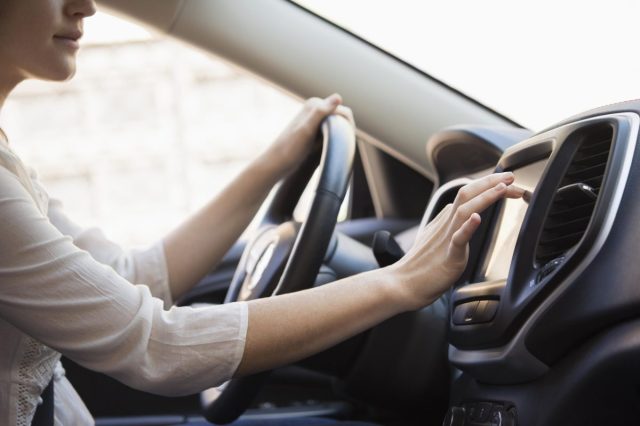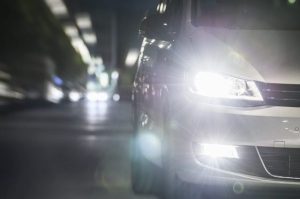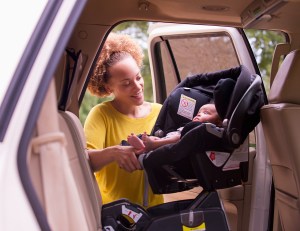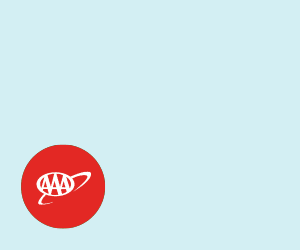For those of us who are directionally impaired, driving with a GPS device is like having your own personal sherpa. These days many people won’t drive without them.
GPS is operated by the U.S. Department of Defense and was developed for military use in the 1970s. Civilians gained access in the 1980s. GPS provides users with positioning, navigation and timing services using satellite signals. Mazda unveiled the first GPS system for cars in 1990, and it’s now standard in cars and on smart phones.
Thanks to GPS, road trips are now a breeze. Besides guiding you to your destination, GPS apps and infotainment systems from some vehicle manufacturers can alert you to upcoming hazards such as construction, lane closures and nearby emergency vehicles, including AAA Roadside Assistance trucks.
However, constantly glancing at the screen to make sure you don’t miss the next exit can be distracting — and anything that takes your focus off the road can be dangerous
Set Your GPS Before You Drive
The only safe way to use GPS is to program your route in the navigation system before you shift your vehicle out of park.
“This gives you time to adjust additional settings, such as avoiding toll roads or adjusting the volume of audible directions,” said Brian Butterworth, director of AAA Northeast’s Driving School.
Entering information into your GPS while driving or simply looking away from the road to check the screen diverts your attention and could lead to a collision. While statistics do not indicate which crashes were caused by using GPS, about 13% of all traffic crashes in 2023 were influenced by a distracted driver, according to the National Highway Traffic Safety Administration.
“While driving, keep your focus on the road ahead — do not look at the screen. Instead, rely on the audible directions to tell you where to go,” said Butterworth.
AAA Driving School students learn how to use a GPS safely during the classroom instruction section on distracted driving.
Voice Commands Are Not the Answer
Voice to text may be legal in some states to set navigation if the device is properly mounted, but that doesn’t mean it is a safer option. These systems have not been shown to reduce crash risk or decrease distraction, Butterworth continued. “While your mind is focused on the voice-activated system, you’re not focused on the road ahead.”
Another safety tip: While driving using a GPS, if you miss a turn or are not in the correct lane to follow the GPS guidance, don’t panic. Backing up or making a sudden turn increases the chances of a collision. Instead, give the GPS time to recalculate the route and let the device get you back on track.
So, enjoy all the perks a GPS provides — just remember to keep your eyes on the road.
Do you depend on your GPS? Despite its benefits, do you ever find it distracting? Tell us in the comments.
11 Thoughts on “Using Your GPS Safely”
Leave A Comment
Comments are subject to moderation and may or may not be published at the editor’s discretion. Only comments that are relevant to the article and add value to the Your AAA community will be considered. Comments may be edited for clarity and length.













I use a Garmin GPS and update it on my computer regularly. I prefer it to the gps on my phone because it has a larger display and I can mount it on my windshield, which keeps it in my field of vision as I’m driving. I’ve learned not to follow GPS blindly because routes and traffic patterns are subject to change.
YES! I believe GPS is distracting, part b/c having to look at the blue line re direction(s) can tempt to “make sure” one is seeing route correctly. It’s an accident waiting to happen:-) i much prefer, at home, to consult GPS maps on my PC, get an overall sense of the route territory, jot a note or two, then proceed to my destination. If it’s really a very unfamiliar and far away destination, I let my wife drive & I co-pilot w/ my i-phone.
I always ALWAYS preview where I’m going to be driving on the computer 1st. So I know where I am in, what directions I am going and what to expect. If it’s a long trip or a place i really don’t know, i write down tbe steps.Tech can fail at any given moment.
I like Waze better than google maps.
Usually, I know where I am going, so I don’t need directions. Two weeks ago, we went to Boston, where I don’t know my way around the streets. We used Waze. It did not work well at all, and we got a very long tour of the city, never actually getting us to our destination. I shut it off, used my head to go in the right direction, finally getting there using my sense of direction. Next time, we will use a better system.
The GPS on your phone loads only part of the map at a time. When you leave one area it downloads the next. The maps are up-to-date, but the downloads depend on a cell signal. if you’re in an area with no coverage, your GPS may freeze. A GPS built into a car, on the other hand, comes with maps for the entire country. You can’t run out of map, but it’s important to keep the maps updated.
My vehicle came with a navigation system which I rarely use. I prefer to use my phone’s GPS connected to the navigation screen thru Apple CarPlay. With the screen & the voice directions I can safely glance at the screen, which is much better than looking at the cellphone’s screen.
I feel comfortable listening to the GPS. I don’t like to look at the monitor or phone when I’m driving. A friend of mine says I should look at the phone so I don’t make a mistake. I feel that taking your eyes off the road for 1 or 2 seconds will create an accident.
We usually enter the address for wherever we’re going into the GPS before we move out of our parking space. But recently I decided I didn’t want to turn on the GPS for a road trip that I took dozens of times before GPS was commonly available. I turned on an audio book for the kids and drove for a couple of hours without anyone tell me what to do. It was a nice break. If we’d hit a lot of traffic without GPS to reroute us, I might feel differently about things, but the way it worked out encouraged me to do it more often.
I’ve found that having my phone mounted makes it easier to give a quick glance if necessary with eyes right back to the road. Takes no more time than looking in the rearview or sideview mirrors.
Yeah, I have a 2024 model sedan and using GPS voice commands for my street address sometimes can’t understand me and I have to put it in manually so I do that when I am in the car starting and before I drive off. And I find that definitely the GPS will AutoCorrect when I make the wrong exit or continue on my way and don’t do the Turn they want. Overall, it’s a good feature if you get lost and the newer models now have voice telling you when to turn as well as putting it right in front of the steering wheel area so you don’t have to glance far. I’ve been driving for many decades and it’s been Taking me about six months to get used to all the new gadgets and apps.